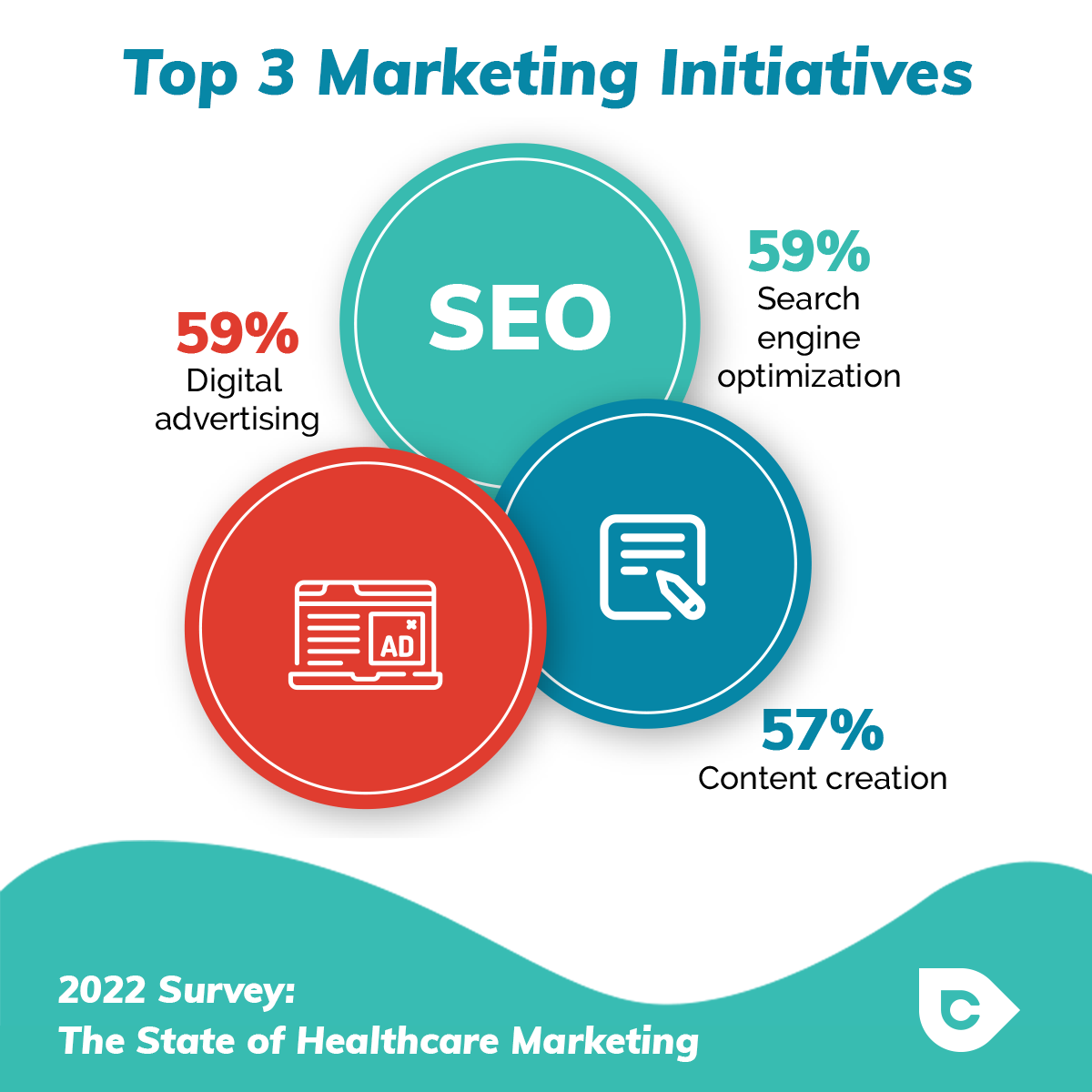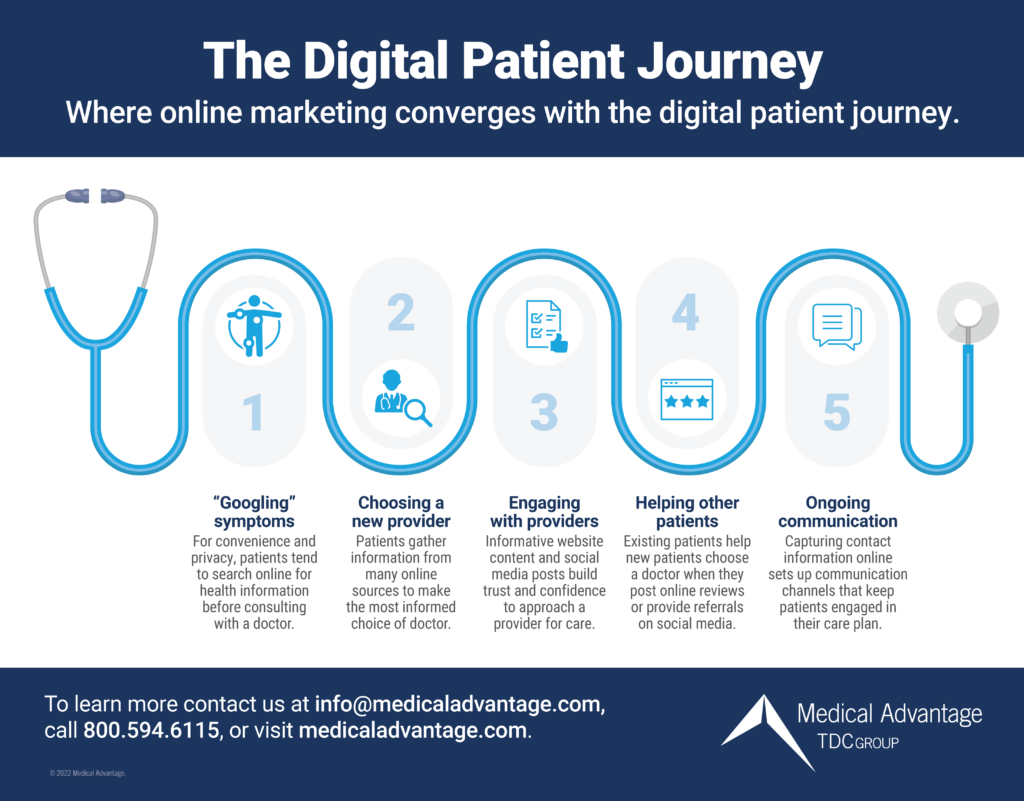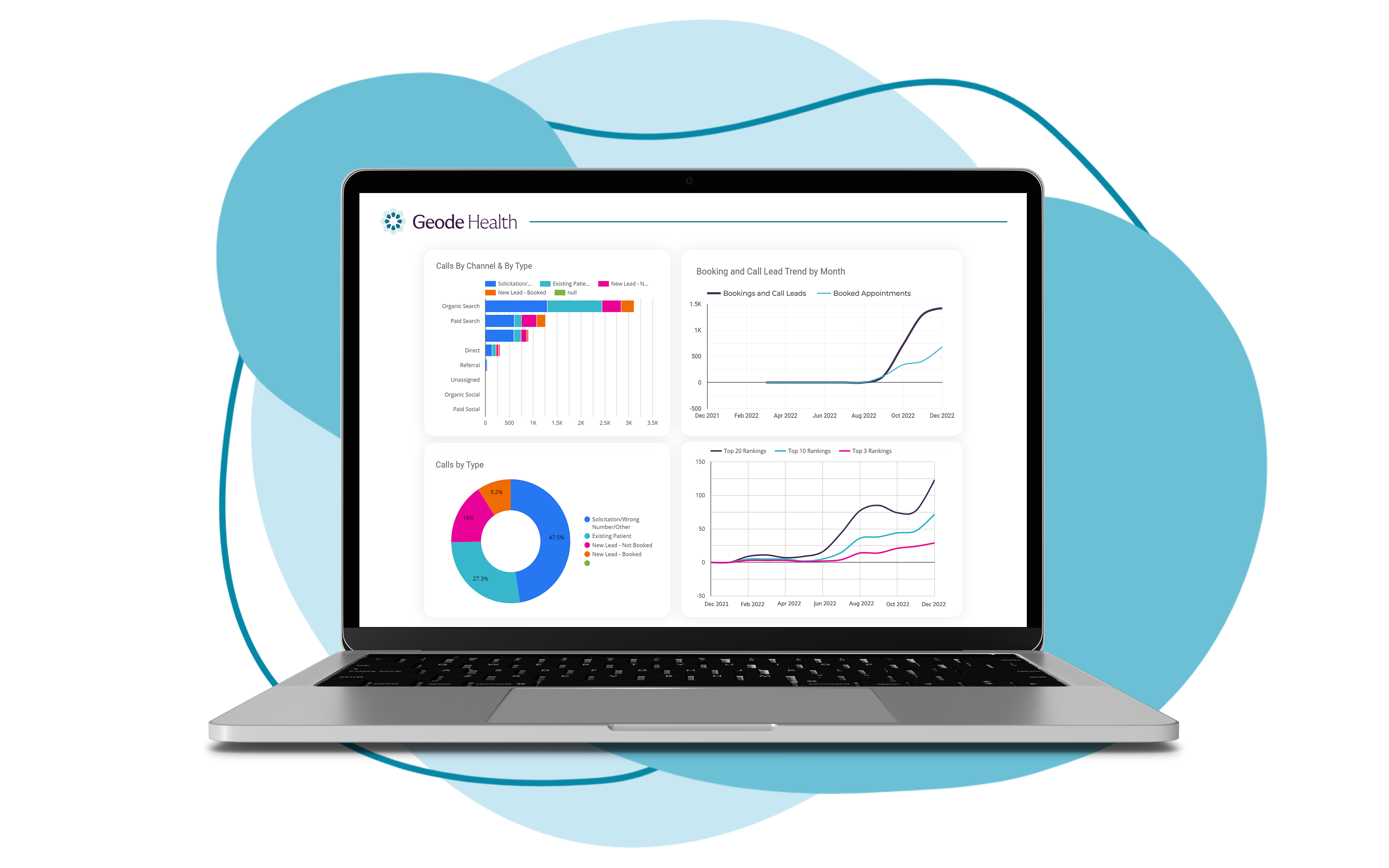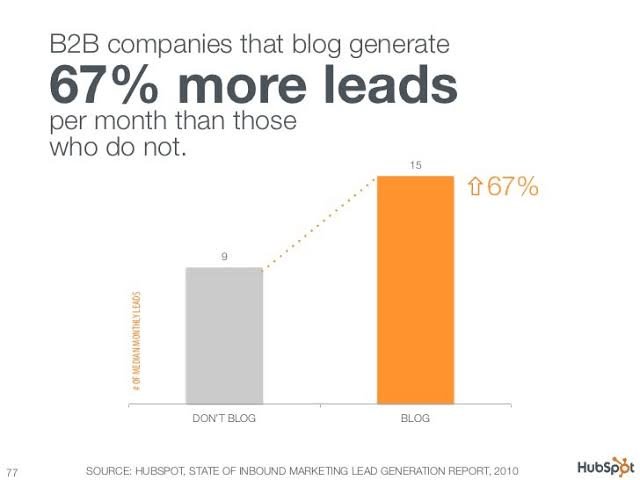Consumer trends show that 77% of patients use online reviews as their first step in finding a new provider. The digital transformation that has taken the healthcare industry by storm has completely altered patient-physician discovery and interaction. Now, more than ever, healthcare organizations are taking advantage of the marketing opportunities the digital world offers. In other words, healthcare marketing plays a very big role in the decisions patients and potential patients are making, since everyone is online. Regardless of the type of healthcare practice you’re promoting, the overall objective of healthcare marketing is to connect with patients at the right stage of their journey. Before we explore 9 benefits of healthcare marketing for your organization, let’s get the basics out of the way.
Table of Contents
- An Overview of Healthcare Marketing
- 1. Increase Patient Loyalty with Frequent Communication
- 2. Engage the Patient at Every Step of their Journey
- 3. Target the Right Audience
- 4. Generate a Consistent Lead Pipeline for All Locations
- 5. Optimize and Obtain Better Conversion Rates
- 6. Accurately Measure All KPIs
- 7. Gain Credibility for Your Healthcare Brand
- 8. Gets You More Bang for Your Buck
- 9. Levels the Playing Field
- 7 Signs You Need Help With Healthcare Marketing
- Start Reaping the Benefits of Healthcare Marketing
An Overview of Healthcare Marketing
In a nutshell, healthcare marketing refers to the strategy and tools healthcare groups use to increase awareness of services, build patient loyalty, and attract patients. Today, hundreds of thousands of provider groups engage in digital marketing, as they find it easier—and more cost-effective—to reach a large number of patients this way.

There are many digital healthcare marketing tactics, some of which are:
- Search engine optimization (SEO)
- Paid search
- Display advertising
- Social media marketing
- Content marketing
- Email marketing
- Influencer marketing
- Affiliate marketing
Traditionally, provider groups reached their target audience using channels like television, radio, magazines, events, and direct mail. Now, as patients spend more time online, providers are trying to reach them through digital channels. After all, marketers need to go where the people are.
If you want to make the switch and diversify your marketing strategy, you probably want to understand the benefits of these new healthcare digital marketing tactics.
So, let’s dive into the top 9 benefits of healthcare marketing:
1. Increase Patient Loyalty with Frequent Communication
As you know, it costs more to attract and convert new patients than it does to retain existing ones. Patient loyalty can be difficult to establish, but it’s well worth your efforts.
A patient retained can continue services or recommend your healthcare brand to others, which helps increase buzz for your practice. To retain patients, you need to keep in contact with them and digital healthcare marketing makes that easier than ever. Some proven tactics include:
- Make patient feedback your source of truth: If you want to know what’s causing your patients to churn, the best first step is to ask them. Then, focus both your in-office staff and marketing teams on capturing and analyzing patient feedback. Collect feedback through surveys, in-visit interviews, social media, review channels, etc.
- Measure key performance indicators most important for retention: There are myriad ways to measure the success of digital marketing. We need KPIs to measure the rate of improvement resulting from our strategies, as well as to focus on future activities. In terms of driving better patient retention, we focus our clients on four essential metrics: retention rate, attrition rate, patient lifetime value, and time between visits.
- Use marketing automation to drive the retention engine: Use MA to your advantage. Think about how to automate touchpoints and processes to improve efficiency and put your organization top-of-mind for your patients. This might include email campaigns, ad retargeting, or CRM automation. You can also use automated notifications and reminders to keep in touch (and keep patients showing up).
2. Engage the Patient at Every Step of their Journey
Before healthcare marketing became an increasingly competitive industry, not many people were talking about the patient journey, mainly because it was difficult to understand and analyze. With healthcare digital marketing, we can track every step that a patient makes, often from the moment when they are triggered to search for a provider or find treatment. This journey can encompass various touchpoints, including online searches, in-person consultations, procedures, and follow-up appointments. Understanding the patient journey is crucial for healthcare marketers because it provides valuable insight into how patients interact with the healthcare system and how they make decisions about their health.
By mapping out the patient journey, healthcare marketers can identify key touchpoints where they can engage with patients and offer relevant information, resources, and support. This allows healthcare providers to build strong, long-lasting relationships with their patients, which can lead to increased patient satisfaction and loyalty.

No matter which channel the patient discovers your practice: Google search, Facebook Ads, display advertisements, Instagram, etc., you can engage with them more easily now. This enables you to help the patient resolve all their questions and objections and influence their healthcare decision.
3. Target the Right Audience
It’s now easier than ever to segment audiences since many digital marketing platforms allow you to target a specific audience. We have access to online tools that keep track of an individual’s online activities and demographic information. Digital marketers can use this data to offer users specific products or services that they may be interested in. For instance, once a visitor clicks on a brand’s display ad, whether on social media or through a search engine, the brand can target that visitor with subsequent and related ads. If the content a visitor receives is based on their interests and online behaviors, it creates positive reinforcement and makes shopping easier and more satisfying.
You can also target your audience with content and offers based on what stage they’re at within the buying journey. For example, email marketing can be used to nurture a lead until they’re ready to make a purchase. Perhaps they subscribed to your blog and consistently opened your blog update emails. After several months, they visit your about me and service web pages. At this point, you know to send them a targeted email with an exclusive offer. They click on the offer and submit a request for a quote.
Sophisticated digital marketing tools make this possible. Let me tell you how it works: when a user fills out a form online, he or she provides personal information. Most web pages have cookies that track the user’s behavior on the page. It’s this data that companies or digital marketers analyze and devise the right strategies for different types of audiences.
4. Generate a Consistent Lead Pipeline for All Locations
Creating your “marketing funnel” is ultimately the main purpose of marketing. A sales funnel is basically a system for generating consistent leads and sales from traffic. In other words, turning traffic into brand enthusiasts. A sales funnel’s job is to separate the “window shoppers” from the real patients that are going to convert. It can also help improve the patient journey, based on Taboola’s study.

An online marketing funnel is specifically designed to consistently generate leads. Here’s an example: before creating an marketing sales funnel, a healthcare practice relied on its billboards and location to generate walk-in leads for its services. Now, the brand is using a digital offer to build a more consistent pipeline of quality leads and meet patients where they are spending the most time.
5. Optimize and Obtain Better Conversion Rates
Improving conversion rates is a crucial objective for healthcare organizations as it directly impacts the bottom line. Here are some ways to achieve better conversion rates with healthcare marketing:
- Segmentation: Segmenting your target audience allows you to tailor your marketing messages to the specific needs of each group. This increases the chances of attracting and converting patients who are most likely to benefit from your services.
- Personalization: Personalized marketing messages are more effective in converting individuals into actual new patients. Personalizing your marketing messages by using the patient’s geographic location, and other relevant information can increase the chances of conversion.
- Relevance: Relevant marketing messages are more likely to be acted upon. By providing patients with information and support that is relevant to their current stage in the customer journey, healthcare organizations can increase their chances of conversion.
- Trust: Building trust with your target audience is crucial in achieving better conversion rates. Providing patients with transparent and accurate information about your services and products, and being responsive to their needs, can help to build trust and increase conversions.
- Optimization: Optimizing your marketing campaigns for different channels, such as search engines, social media, and email, can increase the chances of conversion. By testing and refining your marketing messages and strategies, you can continuously improve your conversion rates.
6. Accurately Measure All KPIs
With digital marketing, you can measure everything worth measuring. From when the ad is clicked to when the visitor leaves the page. Everything! You are able to determine how many people saw your ad, how many sales resulted from the ad, and ultimately, your return on investment (ROI). Data analytics software (such as Google Analytics) and social networks or ad platforms (such as Facebook Ads and Google Ads) metrics help you make better-informed marketing decisions at each level of your multi-site healthcare group.
However, it is important that you prioritize the most important data because there are many trackable metrics. This important data is called key performance indicators (KPIs). KPIs are those metrics that are related to the objectives and goals outlined in strategy planning and represent an effective business outcome. Some examples of KPIs are:
- Cost-per-click (CPC)
- Return on investment (ROI)
- Customer acquisition cost (CAC)
- Customer lifetime value (CLTV)
When you have a full understanding of campaign performance, it provides valuable insights into the effectiveness of various marketing and operational strategies. You’ll know what’s working and what’s not, so you can pivot your strategy based on your unique business goals!

7. Gain Credibility for Your Healthcare Brand
Content marketing studies show that digitally active healthcare brands usually end up having the most credibility. Through its content, a healthcare brand can address patients’ doubts and answer important questions.
Useful and interesting content helps a provider group to gain the trust of its patients, as well as that of industry experts. It can be effective to the extent that competitors start to cite it also in their content. Another way to gain credibility for your brand is by managing your online reputation. Patients are looking for providers they can trust. In fact, 90% of customers read online reviews before making a purchase. It goes without saying that your online reputation could either make or break your business— Maintain your online reputation by:
- Proactive reputation management – Proactively manage how you’re perceived online, building a solid foundation of high-star reviews that prove your brand’s credibility.
- Scalable review generation – Cover all your bases with multi-location reputation management. Generate positive reviews across all your locations to ensure consistency and credibility.
- Improve search rankings – Your local SEO rankings depend partly on great reviews.
- Gain patient insight – Insight into honest reviews gives your brand improvement opportunities and a deeper understanding of your patients’ experience and values.
Blogging is one way that you can establish your expertise. Consumers seek out high-quality content that addresses their challenges and questions. Your company’s subject matter experts have insights that are highly sought after and should be shared with your target market. Adding more useful long-form content that gives unique and helpful answers to common queries your target patient has will help you rank higher.
According to HubSpot, companies that blog generate 67% more leads and It takes five-to-seven impressions for people to remember a brand.

8. Gets You More Bang for Your Buck
Many healthcare groups might think they have to save a lot of money to benefit from digital marketing. But this isn’t entirely true. Digital marketing in healthcare can be very affordable and can often yield high ROIs. A small practice, for example, can reach patients early and begin to scale quickly. It’s also easier to measure ROI at the various stages of the funnel.
Healthcare marketing is all about building an online presence. Even if you don’t have the budget for SEO or pay-per-click (PPC) advertising, a healthcare brand can still use digital marketing to build and connect with their patients. Social media is a cost-effective healthcare marketing tactic that requires little costs, other than your time. Email marketing can also be very affordable.
You may be hesitant to invest in PPC advertising, but it is also a very affordable digital marketing tactic. You don’t have to worry about runaway budgets because the campaigns can easily be controlled.
Chief marketing officers (CMOs) are getting smarter with their marketing budget. Instead of wasting money on expensive TV ads, they choose social media, search, online video, and other online media channels to run ads at a cheaper rate.

With consistent publications on a healthcare blog and social media network, for example, you can capture leads and turn them into customers. Depending on how effective your strategy is, you can start a digital marketing campaign with as little as $10 investment on Facebook Ads or Google Ads.
Focusing your strategy on the right audience and executing the techniques efficiently is crucial in generating leads and conversion on a tight budget.
9. Levels the Playing Field
Content marketing and SEO require investments, but you don’t have to break the bank. If you can create high-quality content that answers people’s questions, you can rank for long-tail keywords. It may take time, but it is possible.
It is true that big healthcare companies can throw serious money behind their digital advertising campaigns. However, money isn’t the only factor that matters when determining an ad’s rank on the SERP. Both Google Ads and Bing Ads evaluate an ads’ relevance and quality before determining its rank. If you have a highly relevant ad that answers patients’ questions, you can achieve the top spot on the SERP.
7 Signs You Need Help With Healthcare Marketing
Now that you know about the benefits of healthcare marketing, how will you know exactly when you need a strong digital marketing campaign? Below are the signs that you need help with your digital marketing strategy.
1. You’re Unable to Maximize Your ROI
The ultimate goal in digital healthcare marketing is to see tangible results from your campaign. Having said that, are you able to get the best possible return on your investment (ROI)?
For starters, you need to determine your cost per acquisition (CPA) – how much does it cost you to get a single new patient. Once you audit your digital marketing campaign, you’ll likely uncover that some methods or channels are more effective than others.
Your campaign’s ultimate goal is to acquire the most number of patients or customers for the lowest cost possible. You accomplish this by comparing the results from all your marketing efforts and which channels yield the best ROI.
If you’re not hitting your target ROI numbers, your digital marketing campaign may be due for an overhaul.
2. Your Social Media Accounts are Failing
Many people think that social media healthcare marketing simply boils down to creating accounts and posting whenever they feel like it. In reality, provider groups should create and post content that resonates with their target audience.
Likes, comments, shares, and retweets are all social signals that indicate engagement. If you’re posting content and updates with barely any engagement at all, your social media marketing campaign likely needs some work.
With the help of a healthcare marketing agency like Cardinal, you can develop strategies that are specific for each platform, keep an eye on social media trends, and be more consistent.
3. You’re Getting Traffic But No New Patients
A lot of healthcare brands are too hung up on driving traffic into their websites without much regard for anything else. In healthcare marketing, traffic is simply one part of the equation when it comes to a successful campaign.
Your website could be generating thousands of visitors every week, but if they’re not booking appointments, it’s a waste of time and money. In this case, your marketing efforts are not highly-targeted to only attract leads that are more likely to convert – like filling out a form, booking an appointment, or making a phone call, etc.
One of the major strategies of healthcare marketing is conversion rate optimization (CRO). It’s the process of optimizing the content and elements of your website to generate better conversion rates from the traffic you’re already getting.
CRO fixes many things that can go wrong in your conversion funnel and help visitors convert.
4. You’re Generating Barely Any Traffic
On the other hand, if your website isn’t generating traffic at all, it’s a clear-cut indication that your healthcare marketing campaign is failing. When you consider that there are numerous ways to drive traffic to your website, it’s either you’re doing it wrong or nothing at all.
Without a doubt, SEO is one of the best methods to generate consistent, long-term traffic for your website. SEO allows your website to rank highly in Google and generate organic traffic.
Just about every digital healthcare marketing campaign will include SEO as one of its many components. However, a well-rounded campaign will also integrate other marketing channels such as PPC and social media to generate organic traffic.
5. You’re Getting Terrible Results From Your Paid Ads
PPC or pay-per-click is a great way to achieve quick results but it can be very expensive if you don’t know what you’re doing.
Many healthcare brands are getting sub-optimal results from their paid campaigns due to poor targeting, unoptimized ads, terrible conversion rates, and exorbitant cost per click. An effective paid search campaign should be properly optimized to target the right audience using the appropriate ad content.
Whether you’re using Google Ads, Facebook Ads, and other paid search platforms, the goal is to be laser-focused on high-quality leads – audience groups that are interested in your product or service.
With a proper PPC campaign, you can get the lowest CPC possible while maximizing your ROI.
6. You Have No Content Strategy
Content is king and in the healthcare marketing landscape, it’s more relevant than ever. Sure, you have a blog and you post an article or two now and then, but that’s hardly content marketing.
Content marketing is the core (if not the most important) component of a strong healthcare marketing campaign. Highly quality content will:
- Inform or educate your target audience
- Fuel SEO and achieve a high rank in search engines
- Earn high-authority backlinks from other websites
- Be highly shareable in social media
- Make you an industry thought-leader
- Establish brand trust and credibility
- Increase conversion rates
If you want to launch a healthcare marketing campaign, you need content. For example, content is the cornerstone element of SEO because high-quality pieces will help you rank higher and gain quality backlinks. For PPC, content is essential for your ad copy and landing pages.
Content is the foundation of any healthcare marketing strategy. Without good content, you’ll have a hard time ranking in Google and attracting the right audience that will convert into new patients.
7. You Have No Multi-Channel Strategy
Focusing on a single marketing channel is certainly a “putting all your eggs in one basket” situation. Even if you’re getting good results from that sole marketing channel, what will you do if that particular strategy dries up?
In digital marketing, it’s highly recommended that you adopt a multi-channel strategy. We’re not saying that you should hop on all of them – after all, not every marketing channel will work for all businesses.
In addition, you shouldn’t have a multi-channel campaign just because you can. All your chosen channels should fit into the bigger picture and be cohesive.
The main purpose of having multi-channel strategies is to fill the gaps in your marketing campaign. Otherwise, a disjointed campaign will cause you to miss out on potential patients, lose prospects while navigating your sales funnel, and communicate inconsistent brand identity.
Start Reaping the Benefits of Healthcare Marketing
You can see that healthcare marketing has so many benefits, and I just mentioned a few mentioned in this article. In my opinion, the top benefit is its cost-effectiveness. With a modest investment, you really can reach an incredible number of people through digital channels. No matter what size your business is, you can benefit from investing in healthcare marketing.
If you need further convincing that healthcare marketing is right for your business, get in touch with us. At Cardinal Digital Marketing, we’re willing to listen to you and answer your questions. Contact us today!

